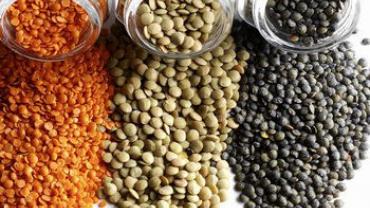
With the increasing popularity of Paleo-style diets and more people experimenting with elimination diets in order to identify foods they are sensitive to beans legumes and pulses are getting a bad rap. Legumes contain compounds that make them problematic for some individuals and if not properly prepared they can be a challenge for even the hardiest digestive system. But legumes have been part of the human diet for millennia and some cultures depend on them as a primary source of protein and micronutrients. It’s almost impossible to imagine Indian cooking without lentils and lentils also feature prominently in classic dishes of Morocco and France. Can thousands of years of culinary tradition be wrong?
The name lentil comes from the Latin for lens which is reflected in the plant’s botanical name Lens culinaris. When it comes to these lens-shaped legumes there’s the good the bad and the ugly.
The Good
Lentils are extremely nutritious little morsels. While individuals on very low-carbohydrate diets might prefer to avoid legumes altogether relatively speaking lentils are fairly benign with regard to glycemic impact. A whole cup (198g)—which is a generous serving—provides 40g of carbohydrate but a whopping 16g of this is fiber which may lessen the glycemic response and increase satiety compared to a food with the same total carbs but less fiber. A 150-gram serving of lentils has a glycemic index of 29 but a glycemic load of just 5 which is very low for a carbohydrate-dense food. In fact lentils contain phenolic compounds that inhibit starch-digesting α-glucosidase which is an additional reason for the low glycemic impact of lentils and may be why consumption of legumes is beneficial for blood glucose control as well as hypertension and other cardiovascular complications associated with diabetes and poor diet.
One cup of lentils also provides 18g of protein. As a plant food lentils do not provide as “complete” a protein as animal foods do but their amino acid score is relatively impressive. Like most legumes lentils are low in sulfur-containing methionine and high in leucine and lysine which is why combining them with foods with complementary amino acid profiles (such as rice or other grains) is a good way to cover the nutritional bases. As for micronutrients tiny lentils pack a punch. One cup of cooked lentils provides 90% of the daily value (DV) for folate and 49% 37% 36% and 25% of the DV for manganese iron phosphorus and copper respectively. They’re also a good source of potassium zinc and B vitamins.
The Bad
Like other legumes and grains lentils contain phytic acid a compound that binds minerals in the food rendering them unavailable to the animals—and people—who consume them. So the impressive nutrient content mentioned previously may not be fully accessible. Fortunately lentils are lower in phytic acid than more commonly consumed foods such as wheat corn and soy. Moreover “hulled” lentils (with the skin/seed coat removed) may have as much as 50% less phytic acid than unhulled. Using hulled lentils improves iron bioavailability and the same is likely true for other minerals. Beyond phytic acid lentils also contain trypsin inhibitors which interfere with proper protein digestion by reducing the efficacy of protein-digesting enzymes.
The good news however is that certain preparation and cooking methods can reduce the amount of anti-nutrients and enzyme inhibitors in lentils. One way to accomplish this for all dried beans—as well as to reduce cooking time—is to soak them in water overnight possibly even changing the water a time or two. Due to their tiny size and lower concentrations of these problematic compounds however lentils do not require as long a soaking time as other legumes and some cooks may choose not to soak them at all.
Another way to reduce the problematic compounds in lentils is to sprout them. This will radically change the appearance and culinary applications of the lentils as well as their nutrient profile. Sprouting will shift lentils from something to use in a soup or stew to something to add to a raw salad as they undergo a transformation from a legume to something akin to a crunchy green vegetable. A cup of sprouted lentils (77g) contains just 17g of carbohydrate and 7g of protein. The micronutrient content is reduced but sprouted lentils are still a good source of vitamins and minerals.
The Ugly
Beans and legumes aren’t called “the musical fruit” for nothing. Legumes contain raffinose and stachyose which are oligosaccharides that are difficult for humans to digest. Having resisted enzymatic breakdown in the stomach and upper GI tract when these starches reach the lower GI tract they are digested by intestinal microbes which results in the bloating and flatulence beans are famous for causing. Fortunately the content of these oligosaccharides is dramatically reduced by sprouting or by soaking in an acidic medium.
Even without soaking or sprouting however the lower anti-nutrient content and quick cooking time of lentils make them a more appealing choice than many other legumes. Lentils are a good place to start for individuals looking to add a little more variety to their diet—particularly if they’re interested in getting more of their protein from plant foods. With their low glycemic impact and lower concentration of problematic substances—at least compared to other legumes and grains—lentils are a nice way to transition from a strict Paleo or legume-free diet to one that is more “ancestral” or traditional.